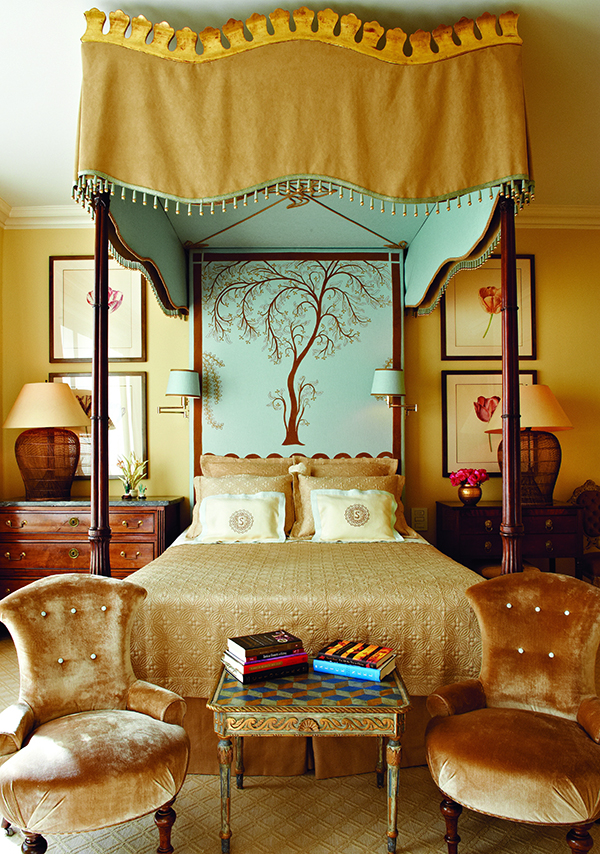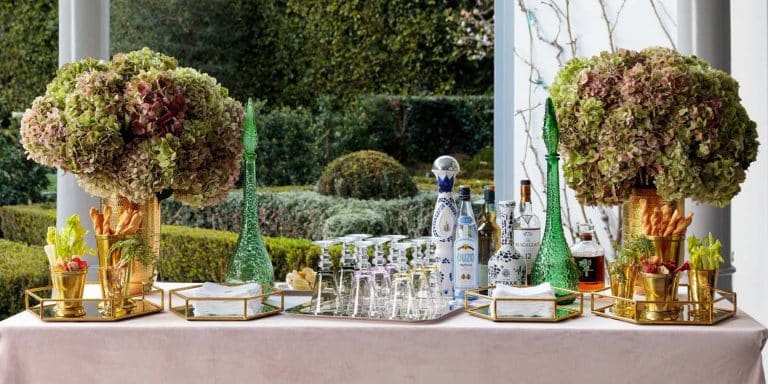
May 1, 2013LaCava’s recently published memoir has been praised as being “at once emotionally resonant and intellectually challenging.” Above: Stephanie LaCava is the author of An Extraordinary Theory of Objects: A Memoir of an Outsider in Paris (HarperCollins), which chronicles her childhood in France, a period she revisits in this essay.
I am going to paint the walls of my bedroom red,” I told my mother when I was ten. “That will make it feel small and cause your heart to race,” she said. I wasn’t entirely sure why either of those conditions were bad, but I answered, “Then I’ll paint it black.”
As it turned out, my childhood bedroom in our house in Westchester, New York, remained untouched for the next five years, not because of parental edict, but because we moved to France. During that wild, dark time living in Le Vesinet, I followed my parents around antique stalls and museums, feeding my obsession with interiors. As I wrote in my recent memoir of that time, color and objects were my way of exercising control over an increasingly mad world. I covered the walls of my bedroom there with postcards and pages torn from catalogs and magazines. The glass shelf below the round mirror of my vanity was lined with old perfume canisters, single earrings separated from their mates, rotting plant life and a tangle of ribbon.
In that room, behind old metal shutters, I was able to manipulate circumstance. It was easy to take an old lace dress and display it on one of my grandmother’s silk hangers that I’d hooked to the rusty handle of the French windows, or line up my collection of geodes and shells. I couldn’t change the fact of our move or the way I was starting to feel, though I tried though atmosphere therapy. While my younger brother built forts out of couch cushions, I locked myself upstairs to read mythology books and redecorate, never content with what I’d just done.
I came out sometimes. It was during one family outing to the brocante that I found my special chair: a guard’s chair with a stained wood frame and a rounded plank covering its top like a canopy. The upholstery was yellow velvet that looked 1970s era, but was much, much older. My father spoke with the dealer in broken French and hand gestures, and then the antique chair was ours. He didn’t pay much for it. His head could just fit below the chair’s wooden roof, but I could easily sit below, book in hand, safe from sun, rain or fluorescent lighting.
 The chair was not mine alone to admire. My father thought it was magic and fell in love with it, in much the same way he had fallen in love with an armoire he’d found with carved fish swimming through the door panels or with the unicorn tapestries at the Cluny. He was also very attached to the idea of keeping it downstairs in the living room of the house in Le Vesinet. My bedroom was left nearly empty, with its wallpaper in a discrete raised pattern of cream-colored arrows, tiny collections, postcards, torn pages and my grandmother’s 1920s armoire and vanity.
The chair was not mine alone to admire. My father thought it was magic and fell in love with it, in much the same way he had fallen in love with an armoire he’d found with carved fish swimming through the door panels or with the unicorn tapestries at the Cluny. He was also very attached to the idea of keeping it downstairs in the living room of the house in Le Vesinet. My bedroom was left nearly empty, with its wallpaper in a discrete raised pattern of cream-colored arrows, tiny collections, postcards, torn pages and my grandmother’s 1920s armoire and vanity.
And then, five years later, we were back in Westchester. I no longer wanted to paint my room red or black. Instead I attacked the walls with new references. I had a photo I took of a painting in one of the Louvre’s galleries, never noting the name or artist. It depicted angels and an apocryphal explosion of stars and aurora. I compromised, as 16-year-old girls do, and painted the bottom of my closet door black and the upper half white, with stars and clouds separating the two — a median in the style of the work in my photo. I became obsessed with paint chips from the hardware store and how easily and neatly they could be organized. (I loved all methods of taxonomy: biological, mythological and, of course, chromatic.) The shiny wall finish was all mine, but the guard’s chair was relegated to the sunroom. I wanted it badly.
Years later, when I left college and moved to New York City, my mother asked me what I wanted for my apartment. She offered to give me what was in the house, but nothing new. “The guard’s chair,” I said. “And do you think I can paint the walls black?”
“It’s a rental.”

LaCava’s photograph of a blue Parisian sky. When her family decamped to Paris from suburban New York, her world came undone. She found solace in her obsession with interiors, however: “I couldn’t change the fact of our move,” she writes, “though I tried to through atmosphere therapy.”

”A taste for the old will never disappear even with new arrivals,” writes LaCava.
And so, with my brother’s pickup truck, we moved my grandmother’s armoire and vanity (my boyfriend carried both up four flights of stairs), an Oriental rug my grandfather had given my parents and the guard’s chair. They all lived with me for a few years, though that boyfriend never returned. He broke up with me. Alone in the city, soon thereafter, I would write at a tiny table in the kitchen area and leave photocopies and papers all around me. When I felt more civilized, I’d sit in the chair, sacred space. My very tall new boyfriend (who would become my husband) came over only once, but it was long enough for us to realize he didn’t fit in my twin bed or my apartment, really. When I moved in with him, the guard’s chair went back to my parents. My boyfriend had a mid-century modern bachelor thing going on, and it was hard to make a case for a piece of furniture too ornate — and too small — for him. I always felt a little uneasy with my flea-market mirrors in storage, though I respected his taste, and then we were engaged and found our own place, which I continue to slowly populate with naturalia trapped in bell jars and objets. But there was always one piece missing.
The window sills of our loft are now crammed with old books, and there’s aging hotel silver by my husband’s crystal decanters. I’ve fallen for contemporary art, as I fell for him, and those pieces live with my Moroccan kilim and 1920s furniture, like he lives with me, in a crazy, unexpected coupling.
I imagine my future house to have an old-world study, even if the room next door has Grasshopper chairs and curly modern art. A taste for the old will never disappear even with new arrivals. There’s a baby on the way, and it’s hard to imagine a nursery without the warmth of antiques and found objects. Once more, as in France, I may need a personal hideaway. I would like a study of my own, a place to write surrounded by black walls, and, behind a mismatched wooden desk, the canopied chair.


